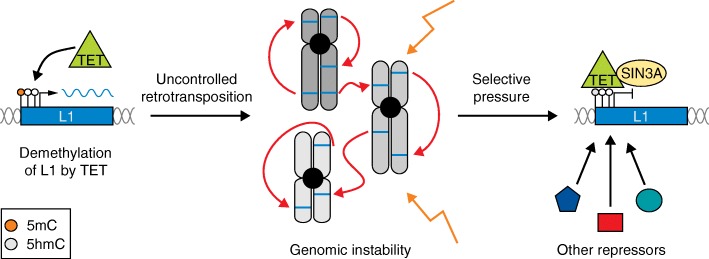Fig. 1.
Evolution of TET-mediated repression of L1 elements. L1 retrotransposons bound by TET enzymes (green triangles) could become demethylated (left), which in turn would result in L1 expression (L1 mRNA indicated in blue). Consequently, uncontrolled L1 expansion can lead to genomic instability due to disruption of gene function and creation of DNA double-strand breaks (centre). Therefore, selective pressure could have led to TET proteins recruiting other repressors, such as SIN3A (yellow oval), to ensure L1 repression and maintain genomic stability (right). 5mC 5-methylcytosine, 5hmC 5-hydroxymethylcytosine, L1 Long Interspersed Element 1, TET ten-eleven translocation

